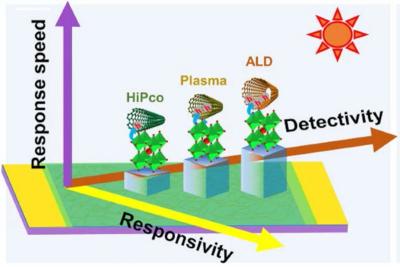Researchers develop strategy that enables world's most efficient quantum dot solar cell
Ulsan National Institute of Science and Technology (UNIST) researchers have developed solar cells using narrow bandgap organic cation-based perovskite-based quantum dots (PQDs) and demonstrated substantially higher efficiency compared with their inorganic counterparts.
The team stressed that research to this point has predominantly focused on inorganic cation PQDs despite the fact that organic cation PQDs have more favorable bandgaps. However, the recent study unveiled a novel ligand exchange technique, that enables the synthesis of organic cation-based PQDs, ensuring exceptional stability while suppressing internal defects in the photoactive layer of solar cells.





